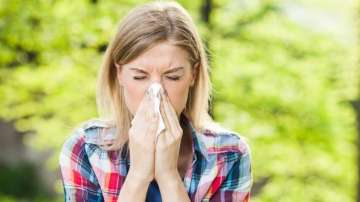World Health Day 2021: Symptoms to look out for as second wave of COVID 19 intensifies
With the growing number of cases, wrong information around coronavirus are also finding space. On World Health Day 2021, let's bust some myths.

Coronavirus second wave
The resurgence of Covid infections has become alarming. With more than 1 lakh cases recorded in a day, India is battling second wave of coronavirus, which seems worse. This wave of COVID-19, according to various research is likely caused by a new coronavirus strain called SARS-CoV-2. This strain seems to gain entry more easily and multiplies faster. The daily rise in new coronavirus infections in India remained above 90,000 for the third consecutive day taking the nationwide COVID-19 tally of cases to 1,26,86,049, according to the Union Health Ministry data updated on Tuesday.
With the growing number of cases, misinformation around coronavirus is also finding space. On World Health Day 2021, let's bust these myths. Here are COVID-19 symptoms according to World Health Organisation (WHO) that you need to look out for. But before that, one must learn that COVID-19 affects different people in different ways. Most infected people will develop mild to moderate illness and recover without hospitalization. On an average, it takes 5–6 days from when someone is infected with the virus for symptoms to show, however it can take up to 14 days.
Most common symptoms:
- fever
- dry cough
- tiredness/weakness
Less common symptoms:
- aches and pains
- sore throat
- diarrhoea
- conjunctivitis
- headache
- loss of taste and/or smell
- a rash on skin, or discolouration of fingers or toes.
Serious symptoms:
- difficulty breathing or shortness of breath.
- chest pain or pressure.
- loss of speech or movement.
Symptoms of new COVID 19 strains:
New COVID-19 strains have also been reported to affect people. Apart from the usual symptoms, reports suggest there are seven new symptoms of the new strain.
- Conjunctivitis
- Diarrhoea
- Discolouration of fingers or toes
- Aches and pains
- Sore throat
- Skin rashes
- headache
One must seek immediate medical attention if one has any of the serious symptoms. Also, always call before visiting your doctor or health facility. People with mild symptoms who are otherwise healthy should manage their symptoms at home and in strict isolation.
According to WHO, among those who develop symptoms, most (about 80%) recover from the disease without needing hospital treatment. About 15% become seriously ill and require oxygen and only 5% become critically ill and need intensive care. Indian Council of Medical Research also shares similar insights. As per ICMR, The majority (80%) of people diagnosed with COVID-19 have mild symptoms of a respiratory infection (fever, sore throat, cough) and make full recovery. Some of the people with diabetes, hypertension and heart diseases including Heart Failure (weak heart) may develop more severe symptoms and complications. Therefore extra care is advised for these patients.
Complications leading to death may include respiratory failure, acute respiratory distress syndrome (ARDS), sepsis and septic shock, thromboembolism, and/or multiorgan failure, including injury of the heart, liver or kidneys. In rare situations, children can develop severe inflammatory syndrome a few weeks after infection.
We urge everyone to stay at home and follow all COVID-19 guidelines like washing hands, sanitising and social distancing.
Also read: COVID-19: DYK properly fitted multilayer masks can reduce particle transmission by 96%
Also read: Deepika Padukone, Siddhant, Alia to Vicky Kaushal, celebs who inspire you to remain fit
Click here for full coverage of coronavirus